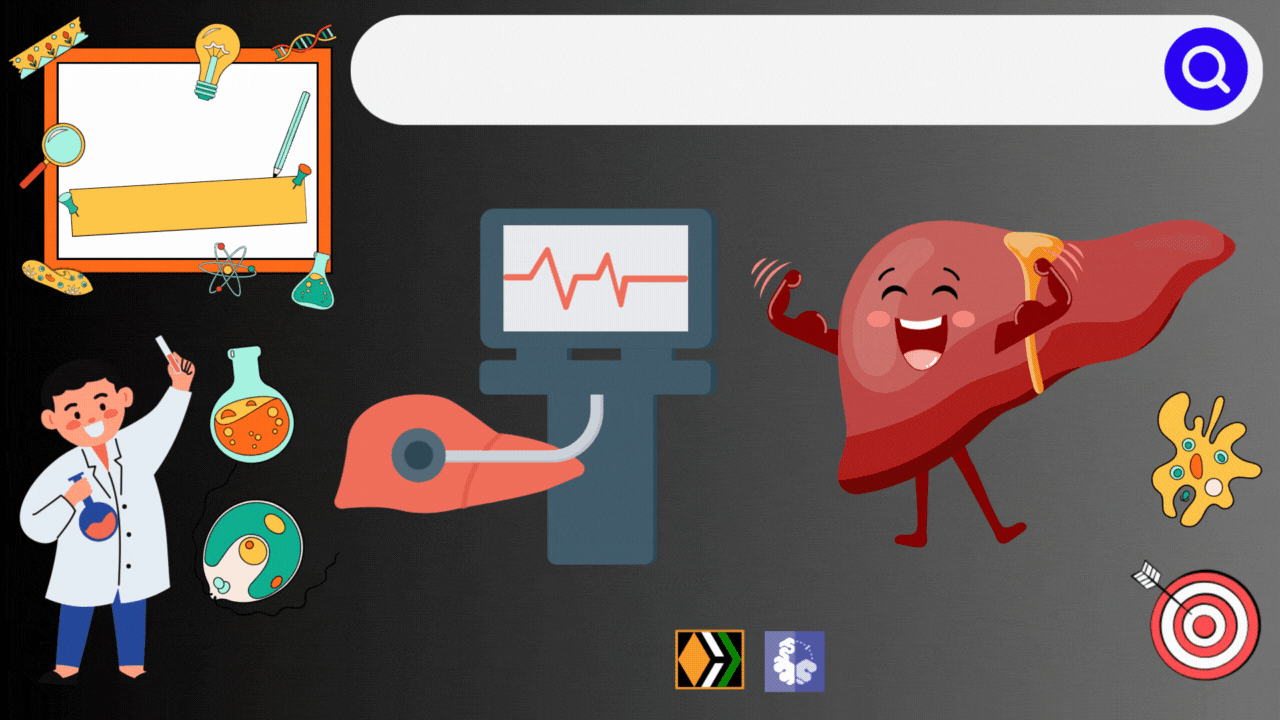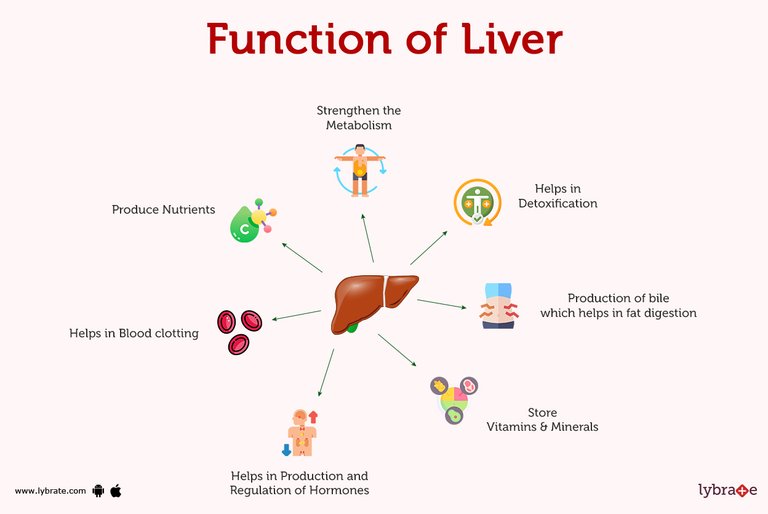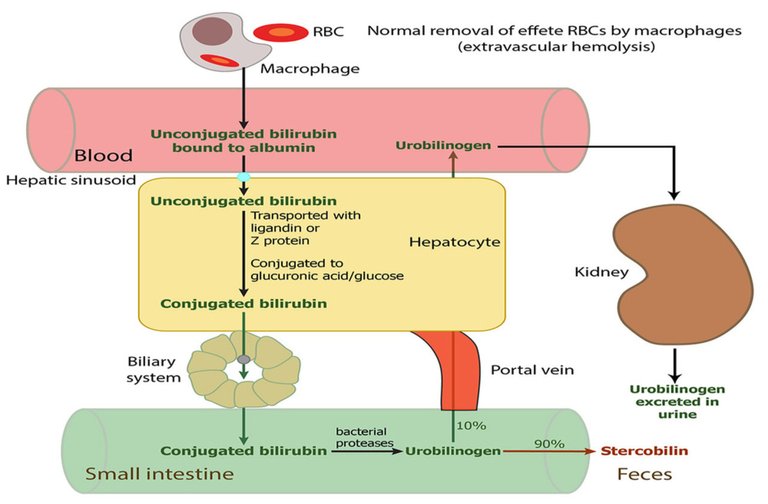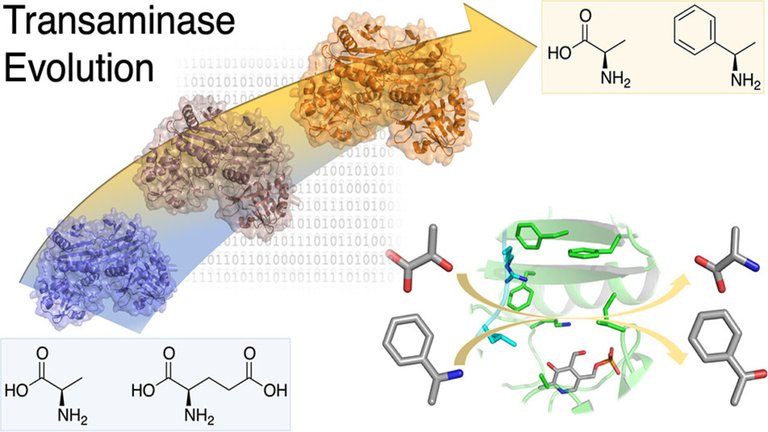Decoding Liver Function Tests through Chemistry |ChemFam #71|
Greetings to everyone! The human body is an intricate symphony of biochemical processes, each organ playing a crucial role in maintaining a delicate balance necessary for survival. Any abnormality in the tissue, caused by exogenous or endogenous factors, will seriously impair the organ function which, in turn, influences health of the organism. Based on the functional capabilities of the organs, specific biochemical investigations have ben developed in the laboratory, to assess their function. We shall discuss the biochemical investigations to assess the functioning of liver.

Understanding the Liver's Role in Biochemistry
The liver, located in the upper right side of the abdomen, is a biochemical powerhouse. It performs a myriad of functions essential for sustaining life. From metabolizing nutrients and detoxifying harmful substances to producing vital proteins and regulating cholesterol levels, the liver is a multitasking marvel.
To appreciate the significance of liver function tests, it's imperative to grasp the fundamental biochemical roles of this organ. The liver is responsible for synthesizing proteins like albumin and clotting factors, crucial for maintaining blood volume and preventing excessive bleeding. Additionally, it plays a pivotal role in breaking down fats, converting glucose to glycogen for storage, and detoxifying drugs and toxins that enter the body.

Causes of Liver Damage
Hepatocellular damage may occur due to viruses (hepatitis A virus, hepatitis B virus), toxins (carbon tetrachloride, aflatoxin), alcohol, hepatocellular carcinoma, autoimmune hepatitis etc.
Tests to assess liver function
The liver function tests (LFT) are the biochemical investigations to assess the capacity of the liver to carry out any of the functions it performs. LFT will help to detect the abnormalities and the extent of liver damage. Two important facts should be borne in mind while carrying out LFT.
- Liver is a large-size factory of safety. Therefore, it can perform many of its functions almost normally, despite the damage.
- Selection of the right test is important in LFT. This is due to the fact that since liver participates in several functions, the function that is measured in LFT may not be the one that is adversely affected.

The major liver function tests may be classified as follows
- Tests based on excretory function—Measurement of bile pigments, bile salts, bromosulphthalein.
- Tests based on serum enzymes derived from liver—Determination of transaminases, alkaline phosphatase, 5’-nucleotidase, J-glutamyltranspeptidase.
- Tests based on metabolic capacity—Galactose tolerance, antipyrine clearance.
- Tests based on synthetic functions—Prothrombin time, serum albumin.
- Tests based on detoxification—Hippuric acid synthesis.
This above list, contains the most important biochemical investigations to assess LFT.
Markers of liver function
The important liver functions and the common plasma/serum markers for the impaired functions are listed below in the table:
| Hepatic function | Common plasma/serum marker for impairedfunction |
|---|---|
| Heme catabolism | ↑Billirubin |
| Enzymes | ↑Alanine transaminase, ↑Aspartate transaminase, ↑J-Glutamyltranspeptidase |
| Protein synthesis | ↓Albumin, ↑Prothrombin time |
| Lipid metabolism | ↑Cholesterol, ↑Triglycerides |
| Drug metabolism | ↑Half-lives of drugs |
| Bile acid metabolism | ↑bileacids |
BILIRUBIN
Bilirubin is a bile pigment, and is the excretory end product of heme degradation. It is conjugated in the liver to form bilirubin diglucuronide, and excreted in bile.
Serum bilirubin
The normal concentration of serum bilirubin is in the range of 0.2-1.0 mg/dl. Of this, the conjugated bilirubin (diglucuronide 75%; monoglucuronide 25%) is 0.2-0.4 mg/dl, while the unconjugated bilirubin is 0.2-0.6 mg/dl.
Icterus index
This is a simple test to measure the yellow colour of serum due to bilirubin. It is rather crude and almost outdated. However, it is often useful for a rapid assessment of neonatal jaundice.
Bromosulphthalein (BSP) test
Bromosulphthalein is a dye used to assess the excretory function of liver. It is a non-toxic compound and almost exclusively excreted by the liver (through bile). BSP is administered intravenously (5 mg/kg body weight) and its serum concentration is measured at 45 min and at 2 hrs. In normal individuals, less than 5% of the dye is retained at the end of 45 min. Any impairment in liver function causes an increased retention of the dye. This test is quite sensitive to assess liver abnormality with particular reference to excretory function.
Transaminases or aminotransferases
The activities of two enzymes—namely serum glutamate pyruvate transaminase (SGPT; recently called as alanine transaminase—ALT) and serum glutamate oxaloacetate transaminase (SGOT; recently known as aspartate transaminase—AST)—are widely used to assess the liver function. ALT is a cytoplasmic enzyme while AST is found in both cytoplasm and mitochondria. The activity of these enzymes is low in normal serum (ALT5-40 IU/l; AST 5-45 IU/l). Serum ALT and AST are increased in liver damage. However, alanine
transaminase is more sensitive and reliable for the assessment of LFT.

The normal AST/ALT ratio is around 0.8. This ratio is increased (>2) in myocardial infarction, alcoholic hepatitis, and cirrhosis. AST/ALT ratio is decreased (i.e. ALT higher) in acute hepatocellular damage and cholestasis.
Alkaline phosphatase
Alkaline phosphatase (ALP) is mainly derived from bone and liver (the cells lining the bile canaliculi). A rise in serum ALP (normal 3-13 KA units/dl), usually associated with elevated serum bilirubin is an indicator of biliary obstruction (obstructive/posthepatic jaundice). ALP is also elevated in cirrhosis of liver and hepatic tumors. Liver is not the sole source of alkaline phosphatase. Therefore, its measurement has to be carefully viewed (along with others) before arriving at any conclusion. The liver and bone isoenzymes of ALP can be separated by electrophoresis.
Gamma-Glutamyl Transferase (GGT)
GGT is an enzyme crucial for the metabolism of glutathione, an antioxidant. Elevated GGT levels may indicate liver or biliary tract dysfunction. The chemistry of GGT is closely tied to the intricate balance of oxidative stress and antioxidant defenses in the body.
Enzyme combinations
Very often, a combination of serum enzyme estimations (instead of a single one) is used for a better understanding of liver functions. For instance, a large increase in transaminases (particularly ALT) relative to a small increase in alkaline phosphatase indicates hepatocellular damage. On the other hand, a small increase in transaminases and a large increase of alkaline
phosphatase shows biliary obstruction.
Conclusive thoughts
Liver function tests, rooted in the principles of chemistry, offer a window into the intricate biochemical dance within our bodies. Beyond the numbers on a lab report, these tests humanize the biochemistry of the liver, turning enzymes and molecules into characters in a narrative of health and resilience.
Until we meet again :)

Liver; Anatomy and Functions | John Hopkins Medicine
Liver function tests | Stanford health care
Understanding the Dynamic Roles of Metalloenzymes and Metal-Activated Enzymes |ChemFam #70|
Cracking the Thermal Code: Differential Thermal Analysis in Modern Research |ChemFam #69|
Applications and Importance of IR Spectroscopy: Shedding Light on Molecular Structures |ChemFam #68|
The Silent Revolution: How Polymers are Shaping Our World? |ChemFam #67|
Beyond the Bin: The Many Faces of Plastic Management |ChemFam #66|
Spectrophotometry Simplified: The Beer-Lambert Law in Spectrophotometry |ChemFam #65|
Chromatography: Unraveling the Science of Separation |ChemFam #64|
Colorful Clues: The Magical World of Chemical Indicators |ChemFam #63|
Colloids in Action: Impacting Your Daily Life More Than You Think |ChemFam #62|
The Complex Landscape of Opioid Analgesics: Addressing The Concerns |ChemFam #61|
Genetic Engineering: Pioneering Progress or Ethical Predicament? |ChemFam #60|
The Guardians Against Microbial Menace: Antibacterial Agents |ChemFam #59|
The Cholesterol Conundrum: The Story of Statins |ChemFam #58|
Unveiling The Control Of Chemistry: How Hormones Dictate Our Mood |ChemFam #57|
Thermodynamic Versus Kinetic Control of Reactions |ChemFam #56|
Bosons: The Quantum Glue That Holds The Universe Together |ChemFam #55|
Extraction of Lithium Using Electrode Materials of Lithium Ion Battery-II |ChemFam #54|
Extraction of Lithium Using Electrode Materials of Lithium Ion Battery |ChemFam #53|
Helium: The First Noble Gas |ChemFam #52|
Hydrogen: The Simplest Atom |ChemFam #51|
Elements, Atoms and Atomic Theory |ChemFam #50|
PS The thumbnail image is being created by me using canva.com



The liver is a an important organ and your text shows a lot about how problems can occur in there ! Liked the diagrams!!
`
Want to Know more about Hivepakistan?
Ping Us On Hive Pakistan Discord server
To support HivePakistan, delegate Hive Power to hivepakistan and earn 90% curation reward :)
Here are some handy links for delegation
A delegation of 500 or more HP makes you earn Hivepakistan supporter badge.
`
Thank you @gwajnberg and @hivepakistan
This post has been manually curated by @bhattg from Indiaunited community. Join us on our Discord Server.
Do you know that you can earn a passive income by delegating to @indiaunited. We share more than 100 % of the curation rewards with the delegators in the form of IUC tokens. HP delegators and IUC token holders also get upto 20% additional vote weight.
Here are some handy links for delegations: 100HP, 250HP, 500HP, 1000HP.
100% of the rewards from this comment goes to the curator for their manual curation efforts. Please encourage the curator @bhattg by upvoting this comment and support the community by voting the posts made by @indiaunited..
This post received an extra 2.09% vote for delegating HP / holding IUC tokens.
Thank you @indiaunited and @bhattg bhai